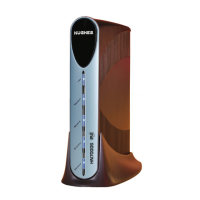Appendix A • Typical Operating System Settings
66
1037073-0001 Revision E
Macintosh operating system, refer to Configuring a
Macintosh to support a DHCP-enabled terminal on page 92.
• If you are using the terminal with a network, you must have
already installed an Ethernet hub or wireless base station and
NICs in the computers on your LAN, and if necessary
connected the computers to the Ethernet hub with Ethernet
cable. See Appendix B – Home Networking on page 95 for
more information.
Configuring Windows
for a static IP address
The instructions for configuring a Windows Vista, XP, 2000, Me,
or 98SE system with a static IP address vary slightly. Find the
appropriate instructions for your system and follow them.
You manually enter the following information to configure your
operating system’s settings:
• IP Address. You need a valid IP address for each computer.
Make sure the address does not conflict with any other
computer connected to the terminal. You can obtain the entire
list of available addresses for use with your terminal from the
Frequently Asked Questions section of the System Control
Center.
• Subnet Mask. This is the subnet mask assigned to your
terminal. It is available on the System Information page of the
System Control Center. You would also have written this on
the Quick Start Guide during registration.
• Default Gateway. This is the IP address of the terminal and is
also available on the System Information page of the System
Note: You must complete the appropriate instructions for each
computer or device that accesses the Internet over the LAN.
Note: Home networking equipment is required but not included.
For network setup, support and configuration, contact your
network hardware manufacturer and/or operating system software
developer (Hughes is not responsible for home network
management or troubleshooting). Simultaneous use of high
bandwidth applications by multiple users may result in
degradation of speed. Actual speeds may vary. Speed and
uninterrupted use of service are not guaranteed.

